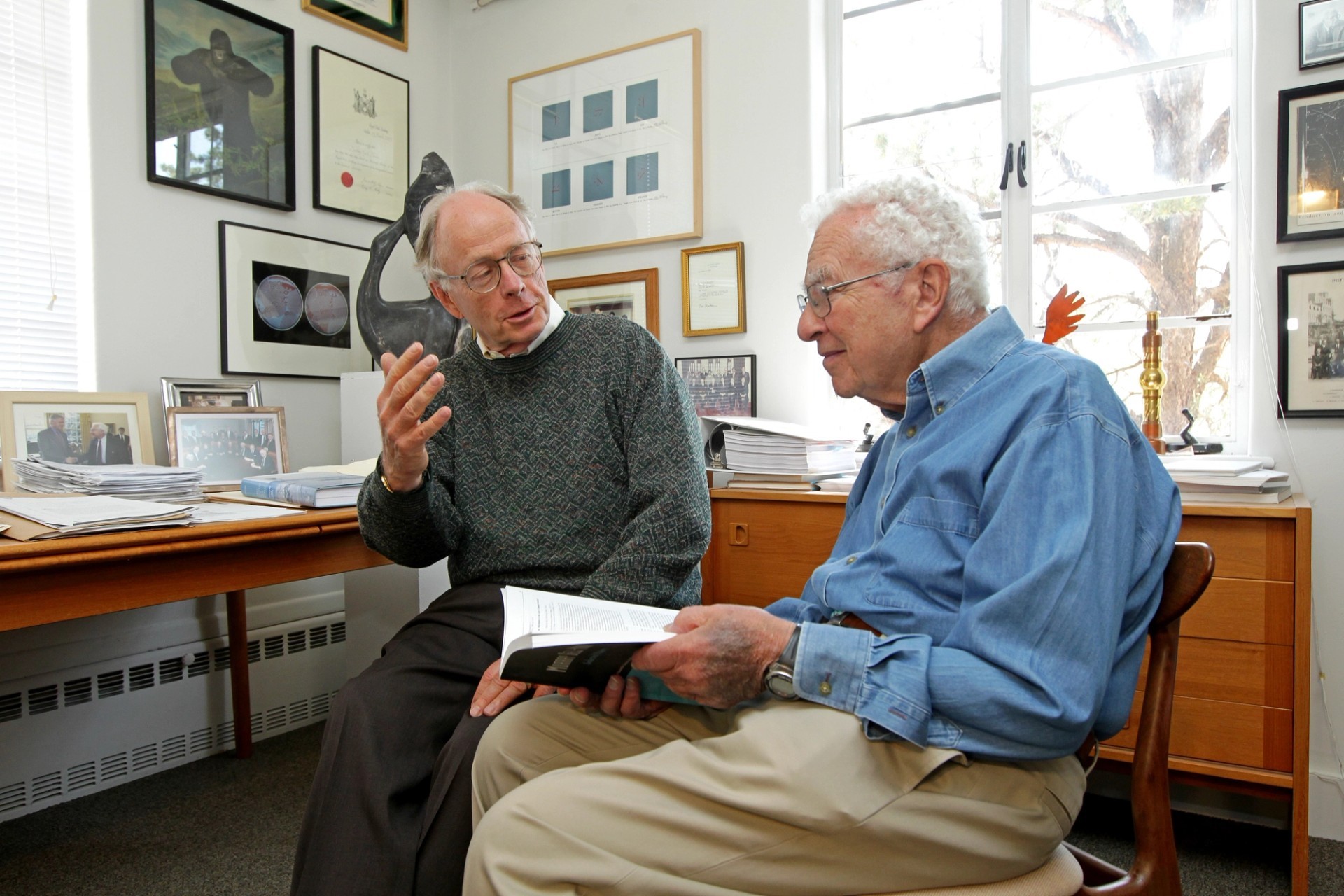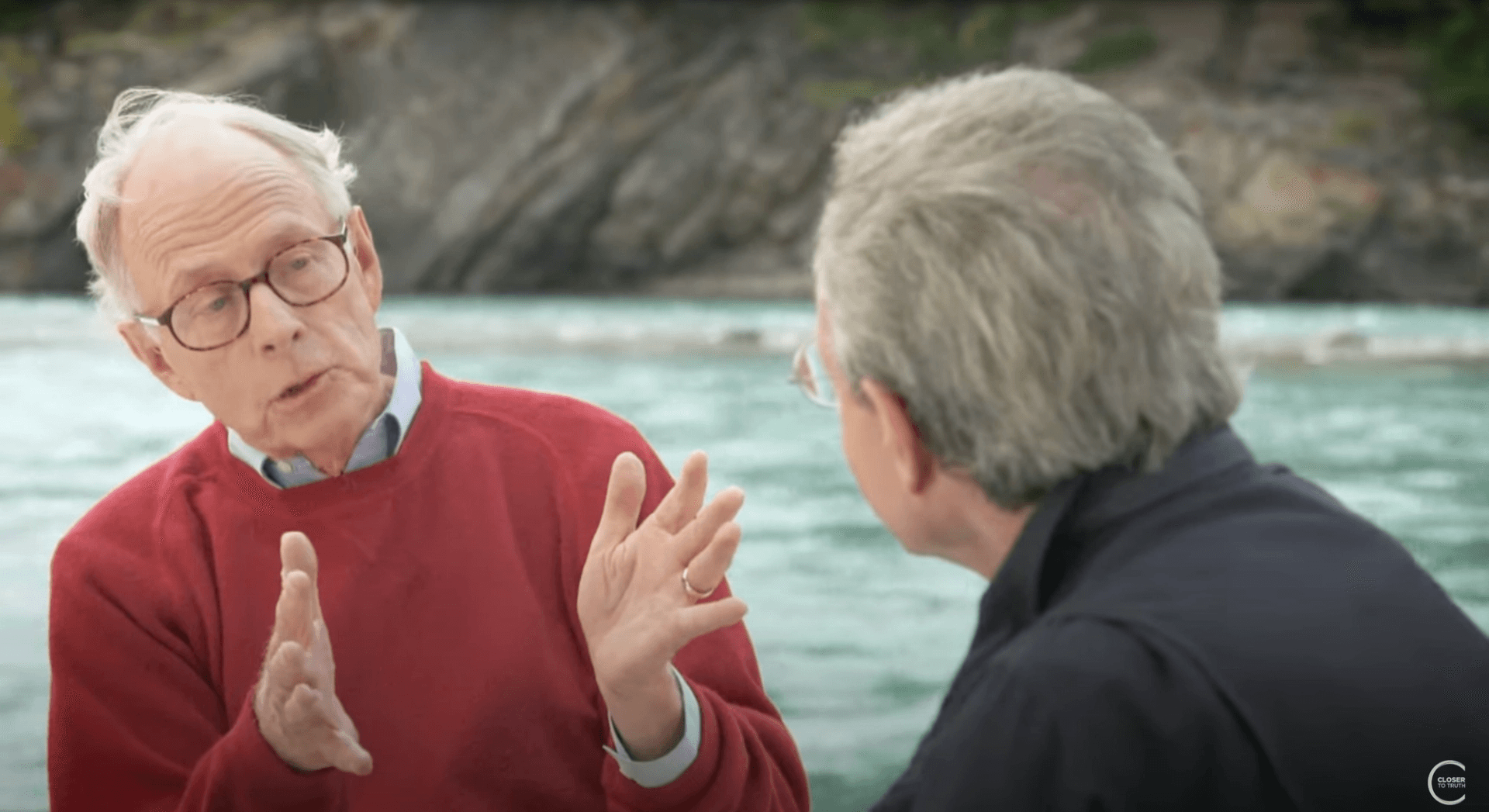Jim Hartle, 1939-2023
Giant of quantum cosmology dies at 83

Jim Hartle, a theoretical physicist whose boundary-defying work sought to unite the quantum world with a cosmos shaped by gravity, died May 17, in Switzerland. He was 83.
“What Jim developed, more than anyone else, was a quantum mechanical way of thinking about cosmology,” says Thomas Hertog, a cosmologist at KU Leuven and a frequent collaborator of Hartle’s.
Hartle was an APS Fellow and Guggenheim Fellow, and in 1991, he was elected to the National Academy of Sciences. Despite his accomplishments – the 2009 Einstein Prize cited a “broad range of fundamental contributions to relativistic stars, quantum fields in curved spacetime, and especially quantum cosmology” – Hartle was averse to the spotlight. “He so easily could have tried to grab some of that limelight that shone on Stephen [Hawking],” says David Craig, a general relativist at Oregon State University and one of Hartle’s students. “He never did.”
Jim Hartle was born Aug. 17, 1939, in Baltimore. His parents, Anna Elizabeth Burkett Hartle and Charles James Hartle, moved frequently due to Charles’ job at IBM. During Jim’s teenage years, they returned to Baltimore, and he attended the Gilman School, learning from physics teacher Bill Porter, whom he later thanked for “starting me off on this trail.” In college at Princeton, Jim initially studied engineering but changed course after meeting theoretical physicist John Wheeler, who became a lifelong mentor – and, eventually, family. Years later, during a stint in Chicago, he asked Wheeler, “what ever happened to that attractive niece of yours?” “And Johnny said, ‘She just lives a few blocks away from here. Why don't you give her a call?’ So he did, and that was that,” says Mary Jo Wheeler Hartle, who married Jim in 1984.
At Caltech for graduate school, Hartle worked on particle physics under Murray Gell-Mann. After graduating in 1964, he briefly taught at Princeton before joining the faculty at the University of California, Santa Barbara, which he would help build into a theory powerhouse with the Institute for Theoretical Physics. In 1967, Hartle began working with Kip Thorne to calculate the dynamics of rotating neutron stars. “We would work late into the night and start again the next day,” Thorne says. The two got along so well that they organized regular gatherings between their research groups, which eventually became the Pacific Coast Gravity Meetings.

Hartle also began to tackle questions about the foundations of quantum mechanics. “He had these wide-ranging interests,” says Gary Horowitz, a theoretician at UCSB and a former postdoc of Hartle. “People often referred to him as ‘a man with no boundaries.’”
The description also alluded to Hartle’s collaboration with Hawking on the no-boundary wave function of the universe. “Jim used to say that physics had always been divided between the laws of motion and the initial conditions,” Horowitz says. “Why couldn't they be the same?” In 1983, Hawking and Hartle proposed an alluring possibility: The wave function can describe a particle’s complete quantum history – could it also describe the quantum history of the whole universe from the beginning?
Conventionally, this was impossible. The truth of the universe’s beginning was supposed to be hidden behind an incalculably dense singularity. Hartle and Hawking found a workaround: A ‘no-boundary’ universe that began without a singularity had a wave function that could be solved.
It was a heady idea with disconcerting implications, including the breakdown of time at the beginning. Many did not agree with their conclusions. Gell-Mann frequently ribbed Hartle, asking why he wasn’t rich if he knew the wave function of the universe. But the idea’s ambition was influential. “People understood that it made sense to think about the universe as a closed system, with just quantum mechanics,” Craig says.
Over the next few decades, Hartle continued his work on interpretations of quantum mechanics with Gell-Mann, often together at the Santa Fe Institute. At the time foundational questions about quantum mechanics were unpopular. “Jim was patient enough and farsighted enough to say, ‘We really have to understand quantum mechanics at a very deep level,’” says Sean Carroll, a theorist at Johns Hopkins University.
At 65, Hartle retired – so that he could focus on doing more physics. In a 2015 essay, “The Observer Strikes Back,” Hartle and Hertog grappled with the tricky detail that observers are more likely to exist in some universes than others. Hartle’s work was welcomed by many philosophers. “Jim’s work is a rich vein to mine for how to think correctly about these ideas,” says Jenann Ismael, a philosopher of physics also at JHU.
Hartle also distilled his approach in an idiosyncratic textbook, Gravity: An Introduction to Einstein’s General Relativity, in which he eschewed the typical math-first formula to focus on physical intuitions about nature. “He gave these absolutely beautiful lectures,” Craig says. “His chalkboards would be works of art; his explanations would be crystal clear.”

A fan of the arts, Hartle enjoyed the philosophically tinged works of Borges, Gogol, and Kafka. He also traveled widely, to Myanmar, Bhutan, and even Antarctica, twice. When, in early 2022, Hartle was diagnosed with Alzheimer’s, he went to work memorializing his colleagues in a series of recollections.
Colleagues remembered Hartle for his gentle demeanor. “It was just amazing just how kind and thoughtful he was,” Horowitz says. When dealing with big egos and prickly tempers, “somehow he was very good at not letting it get under his skin,” says his wife, Mary Jo. According to Craig, Hartle’s attitude helped shape the culture of the general relativity community. “People would really ask constructive questions at conferences and approach each other with respect,” Craig says. “I think that's part of Jim's legacy.”
Hartle was legendary for amusing dinner toasts. In one video shared on Twitter, he delighted an audience by paraphrasing Mark Twain. “The road to good health consists of eating what you don’t want, drinking what you don’t like, and doing what you don’t like,” Hartle said, wielding his wine glass like a conductor’s baton. “I have to tell you that this evening, we are not on the road to good health.” Cue laughter.